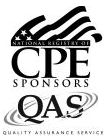Accounting Best Practices (CPE Course)
CPE Credit: 12 hours
Course Type: Downloaded PDF materials with online test
Price (with PDF Textbook): $85
Course Description
The accounting department contains a broad array of processes, all of which can be fine-tuned to improve their performance. In the Accounting Best Practices course, we cover hundreds of best practices and tips that can reduce costs, increase transaction speeds, and eliminate errors. The topics covered include billings, budgeting, cost accounting, payroll, and much more. This is an essential guide for the practicing accountant.
Author: Steven Bragg
Course Number: AC1148
Table of Contents
Chapter 1. Overview of Best Practices
Chapter 2. Credit Best Practices
Chapter 3. Billing Best Practices
Chapter 4. Collections Best Practices
Chapter 5. Cash Best Practices
Chapter 6. Payables Best Practices
Chapter 7. Payroll Best Practices
Chapter 8. Commission Best Practices
Chapter 9. Cost Accounting Best Practices
Chapter 10. General Ledger Best Practices
Chapter 11. Budgeting Best Practices
Chapter 12. Financial Statement Best Practices
Chapter 13. Error-Proofing Excel Spreadsheets
Chapter 14. Records Management Best Practices
Chapter 15. Accounting Management Best Practices
Learning Objectives
Identify the benefits of using best practices.
Specify how to improve upon a best practice.
Describe the dangers of using best practices too much.
Identify the quality considerations associated with credit activities.
Specify how customers should be informed about a firm’s credit policy.
Identify the red flags indicating customer financial trouble.
Recall when a customized credit scoring system is most useful.
Specify the indicators of creditworthiness.
Describe how a check verification service works.
Specify how to enhance billing quality.
Specify how to avoid missed billings.
Recall how an electronic data interchange system works.
Recall how collector productivity can be improved.
Specify how a collections-sales working group can be used.
Identify the impact of stratifying invoices for collection purposes.
Recall the features of collection management software.
Recall the different types of collection policies and procedures.
Specify how cash application should be positioned within a business.
Identify when remote deposit capture should be used.
Recall when fewer bank accounts should be used, and the effects of doing so.
Specify the quality issues pertaining to accounts payable.
Identify how procurement cards should be used.
Recall how a supplier portal is used.
Specify how an automated payables matching system works.
Identify the advantages and disadvantages of an automated expense report submission system.
Recall the benefits of operating a payment factory.
Specify the different types of timekeeping solutions and when they should be used.
Identify how direct deposit functions.
Recall the different types of functions that can be added to a payroll system.
Specify how work is split with a payroll supplier when this function is outsourced.
Identify the organizational concerns associated with commission calculations.
Recall how the value of ending inventory can be made more accurate.
Specify how cycle counting works, and its impact on inventory record accuracy.
Identify why high-leverage allocations should be terminated.
State which variances should be reported to management, and which ones should not.
Recall why alphanumeric accounts should be used in the general ledger.
Specify the process used to consolidate financial statements.
Identify the spots in which budgets tend to contain calculation errors.
Recall the nature of block budgeting and line item budgeting.
Specify when a rolling forecast should be used, and what it should contain.
Identify the problems with a soft close.
Recall which closing activities should be conducted before month-end.
Specify how a workflow management system can improve the closing process.
Identify how the accounting organization can be optimized to improve the closing process.
Identify the methods that can be used to error-proof Excel spreadsheets.
Recall the filing solutions that can enhance file storage within the accounting department.
Specify the options for improving the layout of the accounting department.
Level: Overview
Instructional Method: QAS Self-Study
NASBA Category: Accounting
Prerequisites: None
Advance Preparation: None
Latest Review Date: April 2025
Program Registration Requirements: Click on "Purchase Course" near the top of this page to pay for and access the course. You will then be able to download the course as a PDF file, then take an on-line examination, and then download a certificate of completion if you pass the examination.
Program Refund Policy: For more information regarding administrative policies concerning complaints, refunds, and other matters, see our policies page.
AccountingTools, Inc. is registered with the National Association of State Boards of Accountancy (NASBA) as a sponsor of continuing professional education on the National Registry of CPE Sponsors. State boards of accountancy have the final authority on the acceptance of individual courses for CPE credit. Complaints regarding registered sponsors may be submitted to the National Registry of CPE Sponsors through its website: www.nasbaregistry.org.
The NASBA sponsor identification number for Accountingtools, Inc. is 115881.
AccountingTools is an IRS Approved Continuing Education Provider. We are compliant with the requirements for continuing education providers (as described in sections 10.6 and 10.9 of the Department of Treasury’s Circular No. 230 and in other IRS guidance, forms, and instructions). Our IRS Approved Continuing Education Provider number is 72821.


